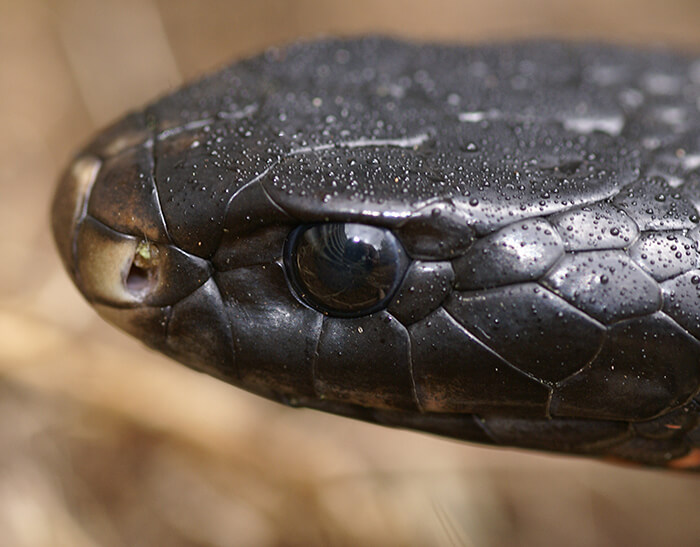Introduction
When it involves the interesting world of serpents, couple of species record the creative imagination rather like the child tiger serpent. Understood for their distinctive pigmentation and potent venom, these snakes are an essential part of Australia's one-of-a-kind ecosystem. In this detailed write-up, we will look into different facets of infant tiger snakes, including their actions, environment, and just how to securely connect with them. Whether you're a wild animals enthusiast or merely interested concerning these creatures, understanding infant tiger snakes can assist foster a deeper appreciation for nature.
Baby Tiger Snakes: What You Need to Learn About Their Habits and Habitat
What Are Child Tiger Snakes?
Baby tiger snakes are juvenile kinds of the extremely poisonous species understood scientifically as Notechis scutatus These serpents are mostly located in seaside areas of Australia, specifically in Tasmania and southern Victoria. As they grow, their pigmentation modifications from a more soft scheme to the particular yellow and black bands that give them their name.
One significant element of child tiger serpents is their size; hatchlings generally determine around 25-30 centimeters in length. Regardless of their little stature, they have a shocking quantity of venom that can be destructive to humans if bitten.
Physical Characteristics
Tiger serpents have several crucial physical attributes:
- Coloration: The distinctive banding pattern usually becomes more noticable as they mature. Size: Grownups can reach sizes of up to 2 meters. Body Shape: They have a durable body that aids in swimming and earthbound movement.
Where Do Child Tiger Snakes Live? Comprehending Their Habitat
Understanding the environment preferences of baby tiger serpents is vital for both preservation initiatives and public safety. These snakes prosper in different settings:
- Wetlands: Marshes and swamps provide enough searching grounds. Coastal Regions: Often located near beaches where they can search for prey. Woodlands: Dense plants offers cover from predators.
Geographical Distribution
Tiger snakes are mainly found along Australia's southerly coastline, consisting of:
- Tasmania: Home to one of one of the most infamous populations. Victoria: Particularly in locations near water bodies.
Are Tiger Snakes Venomous? A Deep Dive into Their Venom
One common question develops when going over infant tiger serpents: "Are tiger serpents venomous?" The response is an unquestionable yes!
Venom Composition
The venom of tiger serpents contains neurotoxins that can trigger paralysis, coagulopathy (blood clot issues), and potentially fatality if without treatment. Here's what you need to know:
- Effects on Humans: An attack from a tiger serpent can cause symptoms like swelling, discomfort at the bite site, queasiness, and also respiratory failure.
Comparison with Other Venomous Snakes
In comparison to other Australian snakes such as the eastern brown snake or king brown serpent, tiger snake venom is taken into consideration among one of the most potent. Nevertheless, casualties are rare due to better clinical treatments and accessibility to antivenom.
Behavioral Patterns of Baby Tiger Snakes
Understanding just how child tiger snakes behave is important for those that reside Safety and Prevention in or go to locations where these reptiles are prevalent.
Nocturnal Habits
Most infant tiger snakes exhibit nighttime actions. They often tend to forage for food throughout cooler evening temperatures. This versatility assists them stay clear of killers while improving their searching efficiency.
Hunting Techniques
Their hunting techniques consist of:
- Ambush Predation: Waiting inactive till target comes close. Active Foraging: Actively relocating with plant life or along rivers searching for food.
First Aid for Serpent Bites: What You Need to Know
Despite being fascinating animals, encounters with infant tiger snakes can result in dangerous situations if bites happen. Recognizing emergency treatment treatments can save lives.
Immediate Steps After a Bite
Remain calmness; panic enhances heart rate. Immobilize the affected arm or leg utilizing a splint or bandage. Seek instant clinical focus-- antivenom may be necessary.Creating a Serpent Bite Emergency Treatment Kit
A well-prepared emergency treatment kit need to consist of: Find more info
|Item|Objective|| ------------------------------|--------------------------------------|| Compression plaster|To immobilize the arm or leg|| Splint|Supports busted bones or joints|| Antihistamines|Eases allergies|| Emergency situation call numbers|Quick access throughout emergency situations|
Common Myths Regarding Tiger Snakes Debunked
Many myths surround these fascinating reptiles; let's clarify some false impressions commonly held by people.

Myth # 1: All Tiger Snakes Are Aggressive
While some people may exhibit defensive habits when threatened, not all tiger snakes display screen aggression towards human beings unless provoked.


Myth # 2: Baby Tiger Snakes Are Much Less Unsafe Than Adults
This myth might not be additionally from the fact! Baby tiger snakes contain nearly as much black snake with blue belly poison as grownups about their dimension; hence they position significant threats if bitten.
FAQs About Baby Tiger Snakes
What do infant tiger snakes eat?- They largely consume small animals, birds, frogs, and fish.
- Look for slim bodies with pale banding patterns that become extra noticable as they mature.
- Yes! Birds of prey and larger reptiles might target them.
- Typically every couple of weeks as they proliferate during their early life stages.
- While some individuals do maintain them unlawfully without authorizations due to their harmful nature; it's generally not advised given their poisonous status.
- With timely clinical therapy-- including antivenom-- the survival rate is high!
Conclusion
In summary, understanding infant tiger serpents-- what they consume, where they live, just how they act-- can furnish us with useful knowledge about these amazing yet hazardous creatures. The value of education surrounding first aid procedures can not be overemphasized; recognizing how to respond efficiently after a bite might save lives while fostering regard for our crawling neighbors within Australia's rich biodiversity range.
By valuing these snakes' duties within ecosystems-- and identifying prospective threats-- we promote conjunction rather than fear-based responses toward one another's existence in nature's grand tapestry! Whether you're a serious hiker contemplating your next adventure or simply interested concerning local wild animals experiences near home-- this guide works as your trusted reference point on the enigmatic world lived in by our friends-- the wonderful baby tiger snake!